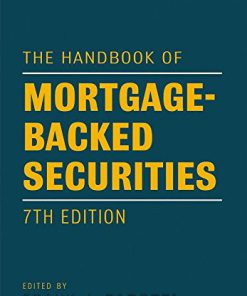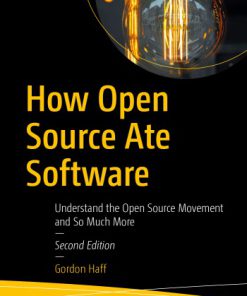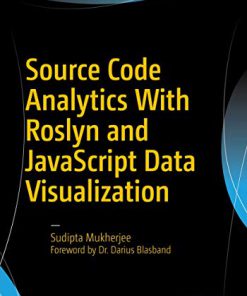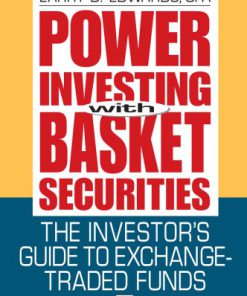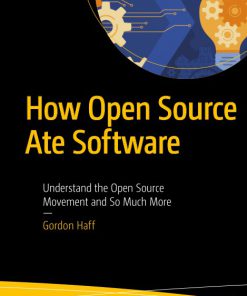Investing in Mortgage Backed and Asset Backed Securities Website Financial Modeling with R and Open Source Analytics 1st Edition by Glenn Schultz 1119221500 9781119221500
$50.00 Original price was: $50.00.$25.00Current price is: $25.00.
Investing in Mortgage Backed and Asset Backed Securities Website Financial Modeling with R and Open Source Analytics 1st Edition by Glenn M. Schultz – Ebook PDF Instant Download/DeliveryISBN:
Full download Investing in Mortgage Backed and Asset Backed Securities Website Financial Modeling with R and Open Source Analytics 1st Edition after payment.
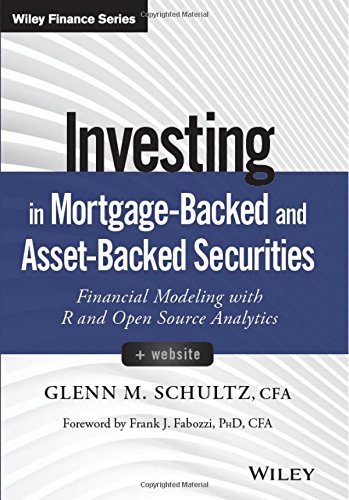
Product details:
ISBN-10 : 1119221500
ISBN-13 : 9781119221500
Author: Glenn M. Schultz
A complete guide to investing in and managing a portfolio of mortgage- and asset-backed securities Mortgage- and asset-backed securities are not as complex as they might seem. In fact, all of the information, financial models, and software needed to successfully invest in and manage a portfolio of these securities are available to the investment professional through open source software. Investing in Mortgage and Asset-Backed Securities + Website shows you how to achieve this goal. The book draws entirely on publicly available data and open source software to construct a complete analytic framework for investing in these securities. The analytic models used throughout the book either exist in the quantlib library, as an R package, or are programmed in R and incorporated into the analytic framework used. Examines the valuation of fixed-income securities—metrics, valuation framework, and return analysis Covers residential mortgage-backed securities—security cash flow, mortgage dollar roll, adjustable rate mortgages, and private label MBS Discusses prepayment modeling and the valuation of mortgage credit Presents mortgage-backed securities valuation techniques—pass-through valuation and interest rate models Engaging and informative, this book skillfully shows you how to build, rather than buy, models and proprietary analytical platforms that will allow you to invest in mortgage- and asset-backed securities.
Investing in Mortgage Backed and Asset Backed Securities Website Financial Modeling with R and Open Source Analytics 1st Table of contents:
Part One: Valuation of Fixed-Income Securities
Chapter 1: The Time Value of Money
1.1 Present Value
1.2 Future Value
1.3 Present Value of an Annuity
1.4 Future Value of an Annuity
1.5 Solving Financial Questions with Present and Future Value
1.6 Application to Fixed-Income Securities
Chapter 2: Theories of the Term Structure of Interest Rates
2.1 The Rational or Pure Expectations Hypothesis
2.2 The Market Segmentation Theory
2.3 The Liquidity Preference Theory
2.4 Modeling the Term Structure of Interest Rates
2.5 Application of Spot and Forward Rates
Chapter 3: Fixed-Income Metrics
3.1 Maturity
3.2 Yield to Maturity
3.3 Weighted Average Life
3.4 Duration
3.5 Convexity
3.6 Fisher-Weil Duration and Convexity
3.7 Effective Duration
3.8 Effective Convexity
3.9 Summing the Aforementioned Measures of Duration and Convexity
3.10 Key Rate Duration
Chapter 4: The Valuation of Fixed-Income Securities
4.1 A Valuation Framework for Fixed-Income Securities
4.2 Application of the Framework to Structured Securities
4.3 Twist and Shift: Characterizing Changes in the Level, Steepness, and Curvature of the Term Structure
4.4 Case Study: 4.00% 30-Year MBS
4.5 Scenario Comparative Analysis
Chapter 5: Fixed-Income Return Analysis
5.1 Return Strategies
5.2 The Components of Return
5.3 The Buy-and-Hold Strategy
5.4 Total and Absolute Returns
5.5 Deconstructing the Fixed-Income Return Profile
5.6 Estimating Bond Returns with Price and Risk Measures
Part Two: Residential Mortgage-Backed Securities
Chapter 6: Understanding Mortgage Lending and Loans
6.1 Classification of Real Estate
6.2 Residential Mortgage Loan Amortization
6.3 Deconstructing the Amortization Table
6.4 Mortgage Servicing
Chapter 7: Modeling Cash Flows
7.1 Prepayment Conventions
7.2 Modeling MBS Cash Flows
Chapter 8: Mortgage Prepayment Analysis
8.1 Big Data—What Is It?
8.2 The Statistical Learner
8.3 Survival Analysis
8.4 The Cox Proportional Hazards Model
8.5 Data Types
8.6 Case Study: FHLMC 30-Year Loan Level Prepayment Analysis
8.7 Survival Analysis—Modeling Loan Cohorts
Chapter 9: The Predictive Prepayment Model
9.1 Turnover
9.2 Loan Seasoning
9.3 Seasonality
9.4 Borrower Incentive to Refinance
9.5 Borrower Burnout
9.6 Application of the Prepayment Model
Part Three: Valuation of Mortgage-Backed Securities
Chapter 10: Mortgage Dollar Roll
10.1 Evaluating the Dollar Roll
10.2 Risk Associated with the Dollar Roll
Chapter 11: Relative Value Analysis
11.1 Liquidity
11.2 Static Cash Flow Analysis
11.3 Return Analysis
Chapter 12: Option-Adjusted Spread Analysis
12.1 Numerical Methods of Modern Financial Theory
12.2 Cox, Ingersoll, Ross Theory of the Term Structure
12.3 Calibrating the Model
12.4 Building the Option-Adjusted Spread (OAS) Model
12.5 OAS Analysis as a Decision-Making Tool
12.6 OAS Distribution Analysis
12.7 OAS Analysis Strengths and Limitations
Part Four: Structuring Mortgage-Backed Securities
Chapter 13: Introduction to REMICs
13.1 Background and Legal Structure
13.2 Two-Tiered REMICs
13.3 REMIC Arbitrage
13.4 Bond Lab MBS Structuring Model
Chapter 14: Stripped Mortgage-Backed Securities
14.1 Key Rate Duration Analysis
14.2 Option-Adjusted Spread Analysis
14.3 The Information Content of the IO-PO Market
Chapter 15: Sequentially Structured REMIC
15.1 Key Rate Duration Analysis
15.2 Option-Adjusted Spread Analysis
15.3 Weighted Average Life and Spot Spread Analysis
15.4 Static Cash Flow Analysis
Chapter 16: Planned Amortization Class (PAC) and Companion REMICs
16.1 The PAC Bond Sinking Fund Schedule
16.2 Key Rate Duration Analysis
16.3 Option-Adjusted Spread Analysis
16.4 OAS Distribution Analysis
16.5 A Final Word Regarding PAC Bands
16.6 Static Cash Flow Analysis
Chapter 17: Sequential IO REMIC
17.1 Key Rate Duration Analysis
17.2 OAS Distribution Analysis
Chapter 18: PAC-Floater-Inverse Floater REMIC
18.1 Structuring the Floater and Inverse Floater
18.2 A Framework for Floating Rate Securities
18.3 Option-Adjusted Spread Analysis
18.4 Key Rate Duration Analysis
Chapter 19: Accrual REMIC Z-Bond
19.1 Key Rate Duration Analysis
19.2 Option-Adjusted Spread Analysis
Part Five: Mortgage Credit Analysis
Chapter 20: Mortgage Default Modeling
20.1 Case Study FHLMC 30-Year Default Analysis
20.2 Other Variables Influencing Borrower Default
20.3 Spread at Origination (SATO) and Default
20.4 Default Model Selection
Chapter 21: The Predictive Default Model
21.1 Constant Default Rate
21.2 Borrower Original Loan-to-Value Default Multiplier
21.3 Updated Loan-to-Value Default Multiplier
21.4 Spread at Origination (SATO) Default Multipliers
21.5 Completing the Prepayment Model
Chapter 22: The Basics of Private-Label MBS
22.1 I Structure
22.2 H Structure
22.3 Y Structure
22.4 Shifting Interest
22.5 Deep Mortgage Insurance MI
22.6 Excess Interest
22.7 Overcollateralization
22.8 Structural Credit Protection
22.9 Hedging Asset/Liability Mismatches
Chapter 23: Sizing Mortgage Credit Enhancement
23.1 Simulating Borrower Default Rates
23.2 Estimation of Cumulative Default Rates
23.3 Translating Credit Enhancement to a Third-Party Guarantee Fee
23.4 Role of the Credit Rating Agencies (NRSROs)
People also search for Investing in Mortgage Backed and Asset Backed Securities Website Financial Modeling with R and Open Source Analytics 1st:
investing in commercial mortgage-backed securities
can i invest in mortgage backed securities
are mortgage backed securities a good investment
is a mortgage a good investment
investing in mortgage loans
Tags: Investing, Mortgage Backed, Asset Backed Securities, Website Financial Modeling, Source Analytics, Glenn Schultz
You may also like…
Business & Economics - Real Estate
Biology and other natural sciences
Biology and other natural sciences
Ecology and Conservation of the Diamond-Backed Terrapin Willem Roosenburg
Commercial & Financial Law
Computers - Programming
How Open Source Ate Software: Understand The Open Source Movement And So Much More Gordon Haff
Science (General)
Power investing with basket securities : the investor’s guide to exchange-traded funds Edwards
Computers - Computer Science
Data simplification : taming information with open source tools 1st Edition Berman
Computers - Programming
How Open Source Ate Software: Understand the Open Source Movement and So Much More Gordon Haff




